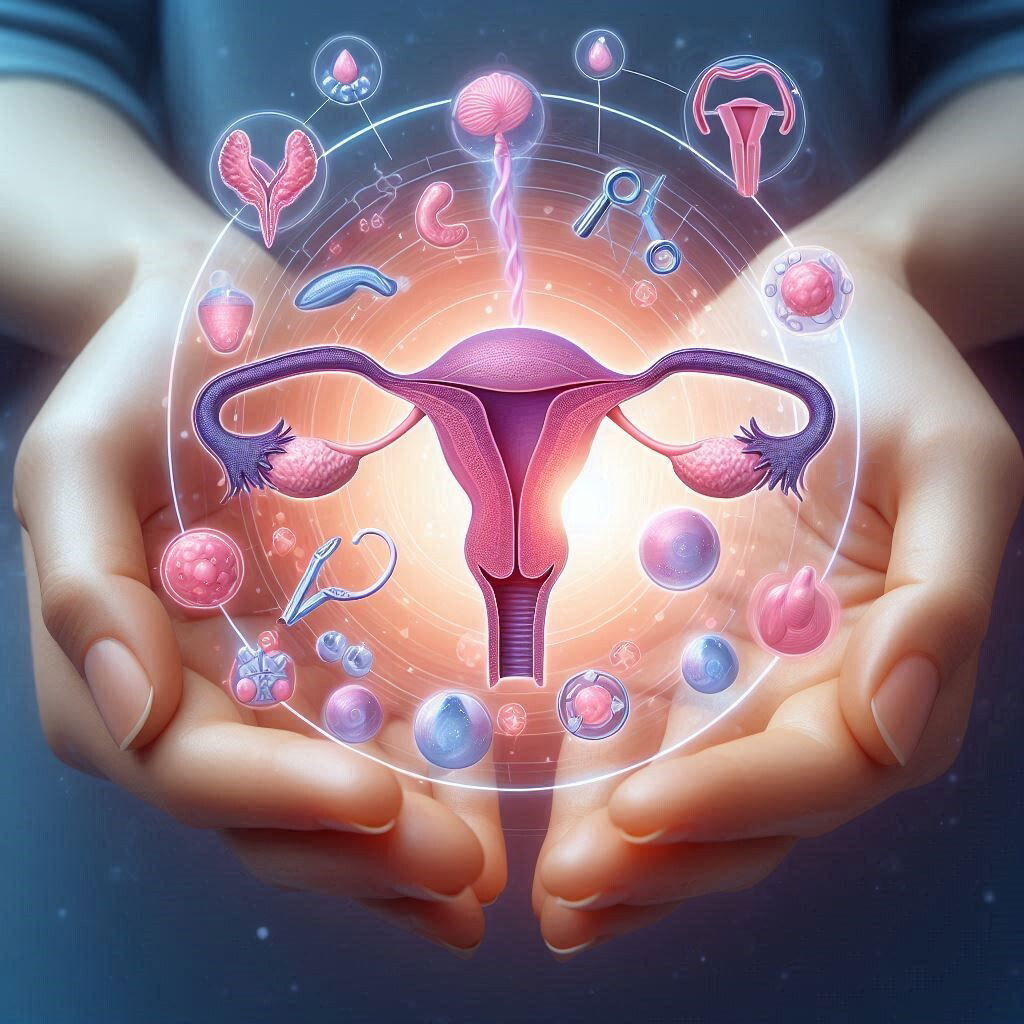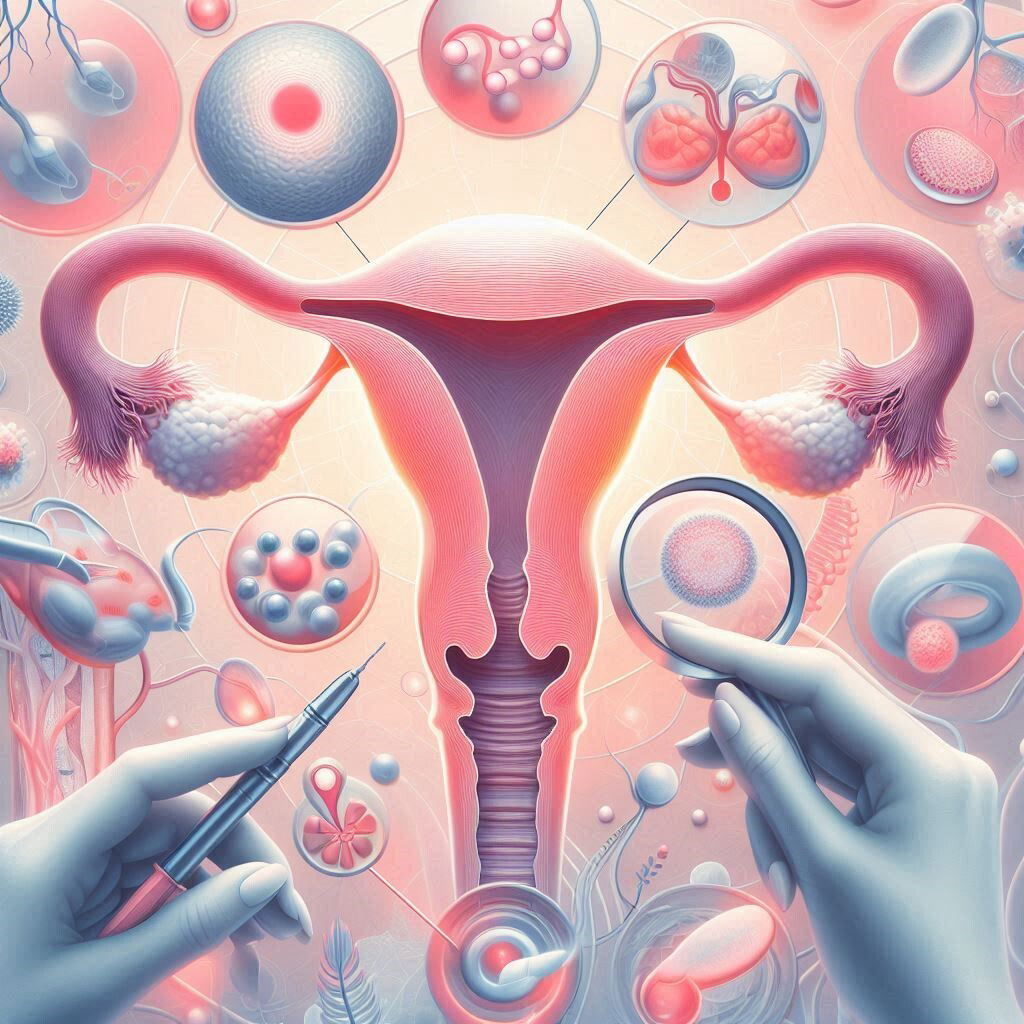The Link Between Adenomyosis and Infertility: A Comprehensive Guide

Introduction
Adenomyosis is a condition where the inner lining of the uterus escapes the uterus walls and starts growing where it is not supposed to grow, which is within the wall of the organ. This condition may affect the woman’s inability to conceive and become pregnant. The paper provides a detailed guide to understanding adenomyosis and its impact on infertility by presenting relevant information, discussing symptoms, and available treatment and intervention options.
What Is Adenomyosis?
Adenomyosis is a condition in which the endometrium or the inner lining of the uterus muscle or wall breaks or moves out and starts growing beyond the uterus walls in the direction of the outer wall of the organ. This tissue grows abnormally, fulfilling its menstrual function and causing large and heavy periods.
Symptoms of Adenomyosis
Generally, the common symptoms of adenomyosis include severe menstrual cramps, heavy bleeding and flow, longer periods, pelvic and some intercourse pains. This condition may disrupt the normal lifestyle and well-being of a woman.
How Adenomyosis Affects Reproductive Health
The Link between Adenomyosis and Infertility
The abnormal growth of the endometrial lining of the uterus and inflammatory response and effects to the uterus may cause challenges in the implantation of the embryo. In addition, the lining of the uterus that triggers menstruation may fail in its appearance owing to the absence of the proper appearance time. The link is generally in the structuring of the organ.
Impact on the Uterus
Adenomyosis accommodates the thickening and enlargement of the uterus at the same time. There may be a more crooked and unusual shape of the organ indicated by the sunken ship shape and figure. It becomes difficult for the adequately and earlier situated embryo to lodge and thrive. This results in the inability of the patient to conceive and become pregnant.
Diagnosing Adenomyosis
Patient’s Medical History and Physical Examination Diagnosis of adenomyosis frequently begins with a comprehensive medical history and physical examination. Symptoms such as painful and heavy periods, along with an enlarged and tender uterus, may be indications for further testing.
Imaging Techniques.
Advanced imaging techniques, including transvaginal ultrasound and MRI, are the most commonly used methods for the diagnosis of adenomyosis. The use of transvaginal ultrasound can indicate the type and extent of the disease in the uterine wall.
Treatment Options for Adenomyosis-Related Infertility
Medications and surgical interventions could be used to help manage the symptoms and reduce inflammation, potentially leading to better fertility outcomes.
- Medications: Different medications, including NSAIDs, hormone therapy, and aromatase inhibitors, may be used to reduce common symptoms of adenomyosis and infertility.
- Surgical Interventions: If medications are ineffective, then adenomyomectomy or hysterectomy could be performed. In women who are still interested in childbearing later, conservative surgery aimed at removing only the adenomyosis from the uterus is preferable.
- ART: Alternative reproductive technologies, including IVF, may be used in the treatment of women with adenomyosis who struggle with infertility.
- Regular Monitoring and Follow-Ups: Regular visits to a clinician for monitoring and assessment of the symptoms and fertility status will help adjust treatment in time and manage the condition better. Other methods of managing the disease include regular exercise, a diet rich with fruits, vegetables, whole grains, and avoiding inflammation.
FAQs
Q1. What are the typical symptoms of adenomyosis?
The symptoms of adenomyosis include very strong cramps during menstruation, heavy bleeding, and prolong periods, the great blood loss, pain in the pelvic region, and the strong pain during the sexual intercourse.
Q2. How is adenomyosis diagnosed?
The condition can be suspected based on the medical history of a woman and its symptoms. The physical examination helps to identify the alternations in the uterus. The best result is achieved when the transvaginal ultrasound is carried out. In some particularly complicated cases the magnetic resonance imaging is also conducted.
Q3. What are the ways of the treatment of the adenomyosis which cause the improvement of the fertility?
There are several ways of the medication, among them are the drugs prescribed for the relief of the symptoms, such as the pain-relieving medications and oral contraceptives, the surgical methods including the uterus removal, the surgical intervention on the ovaries or the steps taken to the enhancement of the fertility as part of the Art and the in vitro fertilization.
Q4. Could the life style changes have the favorable effect on the course of the adenomyosis?
Yes, healthy nutrition, sport, and stress management provide the better chances of the overall reproductive health and reduce the symptoms of adenomyosis.
Q5. Is surgery a compulsory step of the treatment of adenomyosis?
Drugs should always be tried first if the condition is not very severe. There are several conservative surgery methods which allow retaining the ability to conceive in the future by removing the specific sites with the endometrial tissue. The surgery is indicated when the medicine methods fail.
Conclusion
The purpose of this paper was to discuss the fundamental characteristics of adenomyosis with the special attention paid to the problem of infertility which this pathology causes. It was found out that the adequate treatment and life style management allows the woman to be very active in taking the decisions regarding her health, the condition in question in particular.
